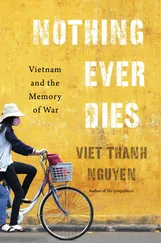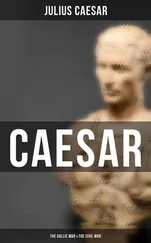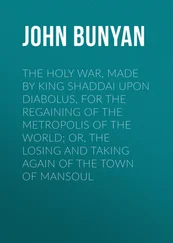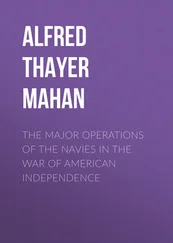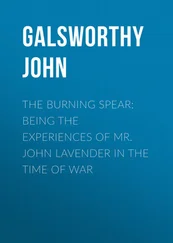Coltart even suspects that an American victory in Vietnam is an elusive, probably unrealistic goal, but from a sense of duty he persists in trying to keep the montagnards in the fight. Yé demands of him the formal promise that “the Annamese soldiers will stay out of these hills, that no roads will be cut, that we shall be left to rule ourselves according to our own” (36). Coltart goes to Saigon in the hope of extracting this promise through his CIA boss, Englehardt, a man he trusts. He knows that Englehardt has always protected his operatives in difficult circumstances, but the CIA has its own political priorities. Diem is under pressure from reporters and the US embassy, the strategic hamlet program is not working, the Buddhist crisis is approaching, and a troublesome reporter named McWhorter is calling for the end of the Diem regime. As Englehardt tells Coltart, it is not the right time to rock the boat with ethnic minority questions. As for American strategy, Diem is their only hope: “He’s tough, intelligent, and has the will to fight. Finally, I know, if John McWhorter doesn’t, that there’s no alternative to Diem” (55). As a clincher, he invokes the domino theory. “We could lose this war…And if we lose it, we’ve lost all Southeast Asia, from Cambodia to Indonesia” (56). Eventually, Englehardt lies to Coltart about Diem’s assurances to keep him and the montagnards holding the line until troops can be sent into the mountains.
Although the correspondent McWhorter is portrayed unsympathetically (he finds it exciting to go on missions where men will kill, about which he can write “a very nice little story”), he is independent of the American mission and more perceptive about the war than is Coltart, who should have taken him more seriously. On Diem, who would cancel the troublesome correspondent’s visa if it were not a public admission to the Americans of his repression of the press, McWhorter’s remarks are perceptive: “We can’t win with this Catholic mandarin, Harry. He’s nothing but a yellow Frenchman…We need Asian leadership here” (89). It is through McWhorter’s eager eyes that the reader sees the shelling and looting of the presidential place, the failure of Nhu’s false coup, and the end of the regime, although to McWhorter’s great disappointment, Diem and Nhu have already fled. He has failed to get his scoop, the final interview with the toppled president, but he will still be rewarded with an editorship for his reporting.
While McWhorter serves as a political guide, a Frenchman named Michaud, who was born and lived much of his life in Vietnam, serves as his (a)moral guide. Frenchmen often serve in novels about the war as cynical but truthful observers of the situation, in contrast to disillusioned American idealists (cf. Greene’s The Quiet American and Just’s A Dangerous Friend ). Michaud functions in just this way as a kind of foil to Coltart, his scarred face a sign of the price of knowledge and experience. He tries to convince Coltart that his guilt is out of place in the present situation. “Don’t wish, Harry, unless you can wish for a clean conscience. What a trade we apprenticed ourselves to! Clausewitz and Jomini say nothing about what it is like to betray a simple people” (112). He asks Coltart why the Americans think they can succeed with sixteen thousand men when the French failed with a quarter of a million, and Coltart thinks the difference is that the Vietnamese are fighting for their “freedom,” an answer that Michaud scorns as the vision of a “schoolboy” who does not take into consideration political complexities. He himself, for example, can operate as a rubber planter without being attacked by the Vietcong only because he pays taxes to both sides.
The third narrative functions as a counter-narrative to the second, with which it eventually converges, setting up an ideological antagonist to Coltart a Communist from the Rhadé tribe named Loye. Michaud is the link between Loye and Coltart, as a former comrade-in-arms of both men (Coltart in Korea and as Loye’s commanding officer in the French war against the Viet Minh). It is to the author’s credit that Loye is no caricature, as so often happens with characters who represent the Vietcong: he is given a complete past, from hunter of the hills and son of a tribal chief, to colonial soldier fighting for the French, to laborer and informant for the NLF. He has aspirations toward military command in this new war against foreigners, and his thoughts show him to be perceptive about the situation: “During the day, part of the country was Diem’s. But after dark the country shrunk to the tips of the bayonets of Diem’s soldiers cowering in their sandbagged forts. In the end, because of this, Loye thought, we will win” (102).
From the lectures he attends in Cholon, Loye has also learned his political lessons: “Did not the Vietcong stand for that which every Vietnamese wanted; rights for ethnic and religious minorities, an end to corruption and venality, the crushing of the landlords, the lowering of taxes?” (59). To become a member of the Party, which he wants badly, he works as a laborer at an AID mission, picking up information that he can pass on about the destination of rice shipments, and he also studies at the tactical school, waiting for a chance to carry out a mission that will impress his superiors. The chance arrives with the summons to a pagoda, where a Buddhist bonze, who is in reality a Party man, offers him a command in the Koho hills of his youth. He must stop the montagnard cooperation with Diem and the Americans by protecting the coolie caravans. The Koho sector is particularly important because of the American agent known as Erohé, the Elephant (Coltart’s tribal name). Loye is to win the Koho chief, Yé, away from this alliance and either discredit or kill the white man Erohé. Besides Loye’s desire to carry out the mission successfully and gain the confidence of the party cadres, he has an additional, personal motivation: Coltart’s wife, Ilouha, was originally promised to him.
Loye shows his military skills at careful planning and swift execution while leading a raid on the montagnard mission and hospital, Notre Dame du Bois. At the same time, he is ruthless and cruel in action, murdering the kindly French priest, Father Dupleix, who once patched up his wounds, and even decapitating him, impaling his head on a stake, and stuffing his genitals in his mouth. This ghastly atrocity is justified as a means of luring Coltart out of the hills. “He was a little sorry about the business of having to kill the priest, but he was a Boc [white man] and undoubtedly an enemy of the people” (150), a formulation that sacrifices personal feelings to political necessity and is probably intended to reveal the presumed Communist tendency to substitute slogans for analysis. The two antagonists are both expert in the practice of war, but Coltart is contrasted favorably with Loye precisely because of his commitment to people—the montagnards, Yé, Ilouha, even his mendacious boss, Englehardt—over political slogans.
While Coltart and Loye seek each other out in the hills, Diem’s occupation policy of the highlands has begun. When Coltart discovers engineers cutting a road into Koho lands, he knows he has been betrayed: “This meant Englehardt had lied. It meant Diem had broken his pledge. It meant his own word to Yé…to the other montagnards was worthless” (206). He now realizes that “like the T’ai, the Koho would pay with their freedom if not with their lives for placing their trust in a white man” (212). Englehardt justifies the betrayal by asking Coltart what, after all, was “moral” about his war. “It’s just one we’ve got to fight because the world is what it is” (215)—an argument whose apparent pragmatism conceals its ideology: what he really means is that the world as “it is” is simply one in which Communism must be stopped at any cost.
Читать дальше

